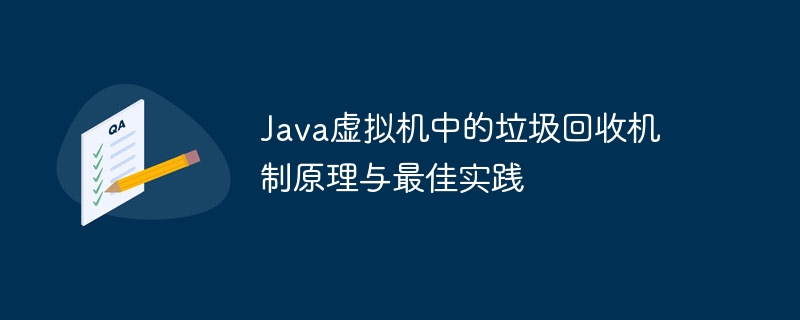
The garbage collection mechanism in the Java virtual machine releases memory that is no longer referenced through reference counters, root objects, and reachability analysis. The JVM provides a variety of GC algorithms, including serial, parallel, and concurrent GC. Best practices include optimizing object creation, reference management, avoiding memory leaks, monitoring GC activity, and tuning GC parameters. Practical examples demonstrate how the garbage collection process releases unnecessary objects, thereby increasing available memory.

Principles and best practices of garbage collection mechanism in Java virtual machine
Garbage Collection (GC) is a key feature of the Java Virtual Machine (JVM) that automatically releases memory occupied by objects that are no longer referenced. The GC mechanism includes the following basic components:
JVM supports multiple GC algorithms, each algorithm has its own advantages and disadvantages:
Serial GC: Single-thread recycling, simple and efficient, suitable for small applications.
Parallel GC: Multi-threaded parallel recycling improves throughput and reduces recycling pause time, but the overhead is greater.
Concurrent GC: Perform GC in a background thread to minimize the application's pause time, suitable for large data volumes and high-throughput applications.
Optimize object creation: Minimize unnecessary object creation and use object pools or shared objects.
Optimize references: Avoid using special reference types such as circular references or soft references.
Avoid memory leaks: Manage the life cycle of objects carefully to avoid holding references to objects that are no longer needed.
Monitor GC activity: Use command line tools or JVM monitoring programs to monitor GC activity and identify potential problems.
Adjust GC parameters: Adjust GC parameters (such as the size of the young and old generations) according to application needs to optimize performance.
Suppose we have a simple Java application that creates a series of objects that are no longer needed. We can simulate the garbage collection process using 다음 code:
public class GCExample {
public static void main(String[] args) {
// 创建一堆不必要的对象
for (int i = 0; i < 1000000; i++) {
new Object();
}
// System.gc() 明确要求立即进行 GC
System.gc();
// 检查可用内存
long freeMemory = Runtime.getRuntime().freeMemory();
System.out.println("可用内存:" + freeMemory);
}
}Run the application and you can see that after calling System.gc(), the available memory increases, indicating objects that are no longer needed has been collected.
The above is the detailed content of Principles and best practices of garbage collection mechanism in Java virtual machine. For more information, please follow other related articles on the PHP Chinese website!
 Vue parent component calls the method of child component
Vue parent component calls the method of child component
 What is digital currency trading
What is digital currency trading
 How to use fusioncharts.js
How to use fusioncharts.js
 length function usage
length function usage
 Cost-effectiveness analysis of learning python, java and c++
Cost-effectiveness analysis of learning python, java and c++
 Representation method of string constant
Representation method of string constant
 mysql transaction isolation level
mysql transaction isolation level
 How to open .dat files
How to open .dat files
 how to build a website
how to build a website




